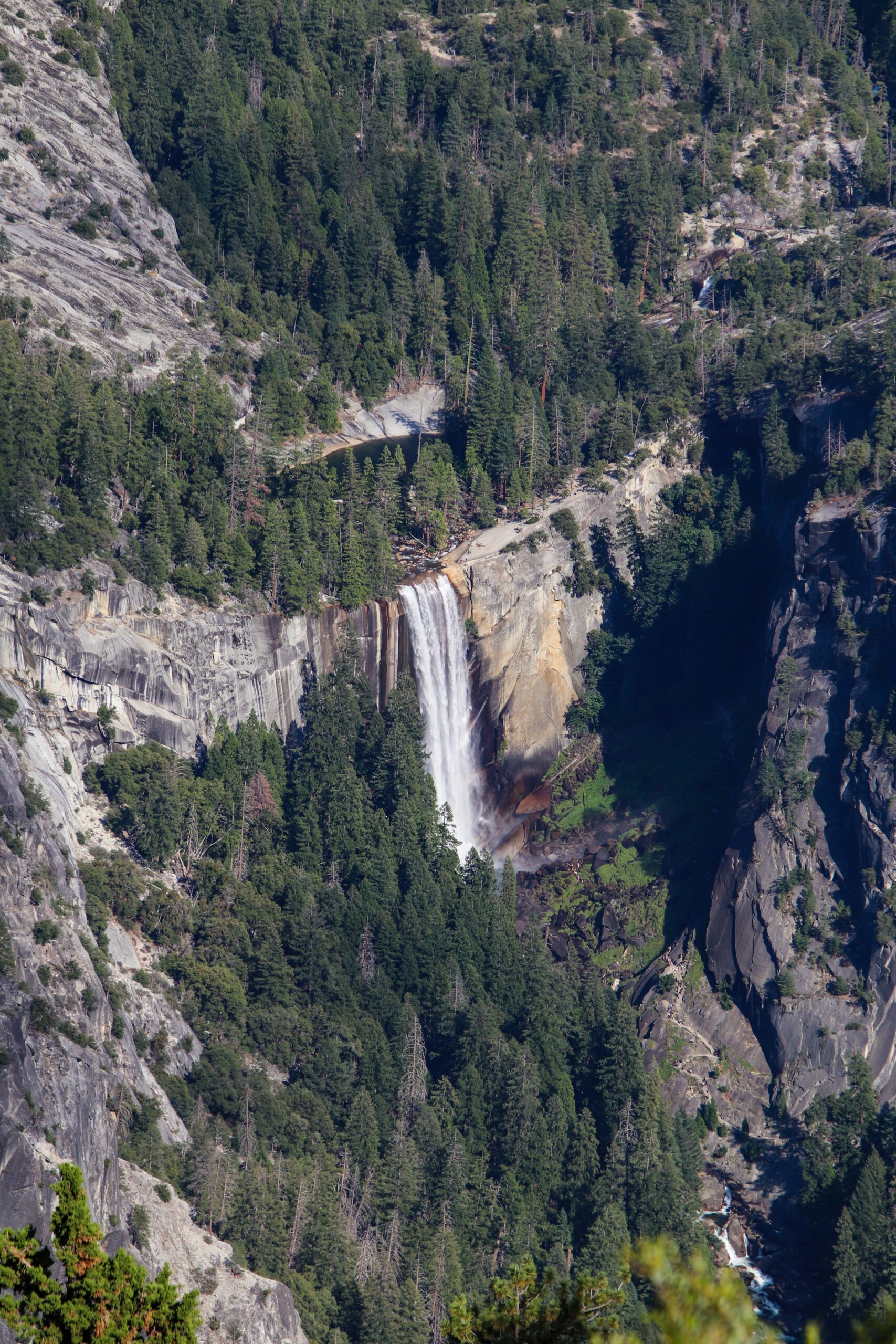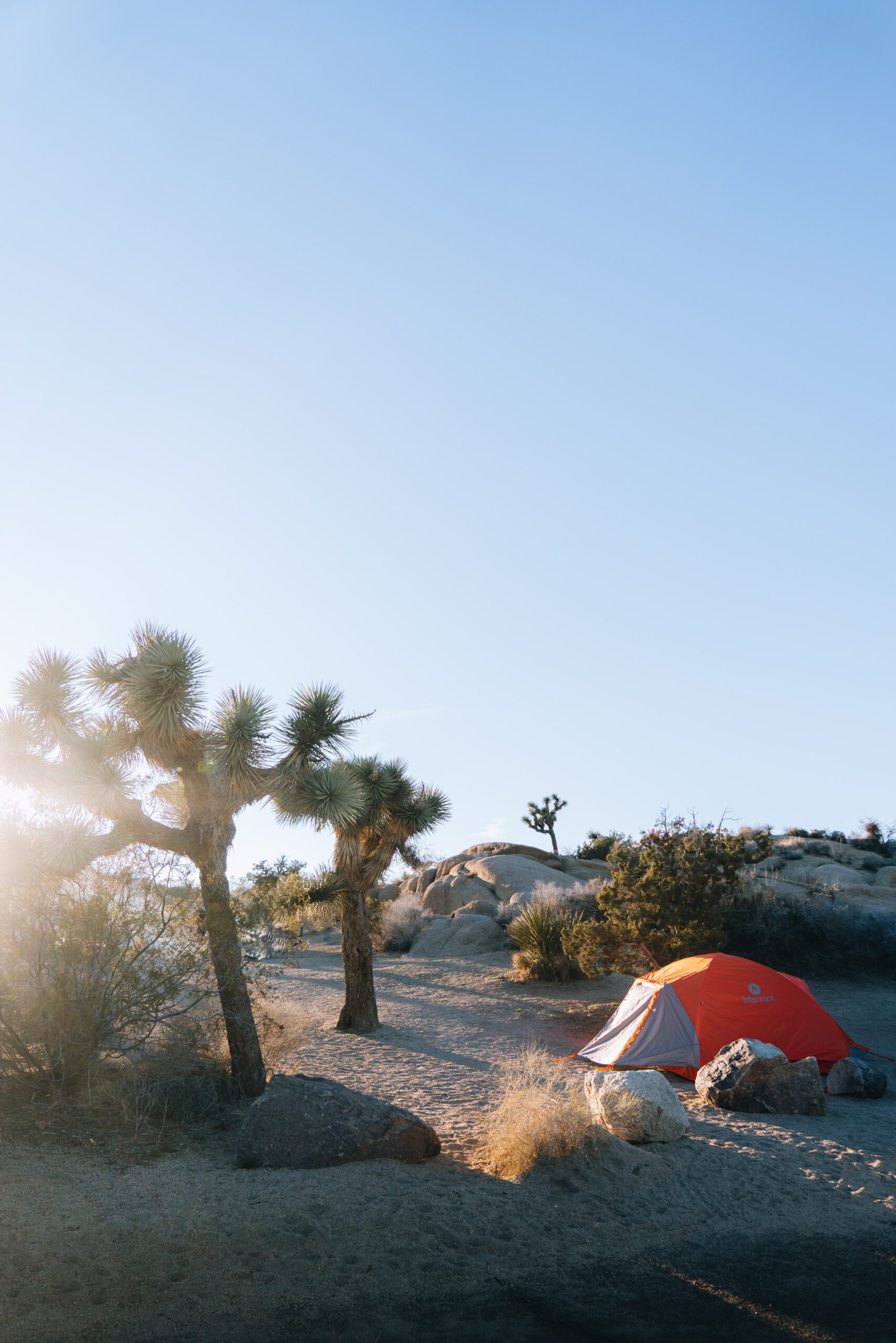California Mountain Ranges: A Friendly Guide to Golden State Heights
California's mountain ranges are a spectacular sight to behold. You'll find an incredible diversity of landscapes across the state, from the towering Sierra Nevada to the coastal Santa Cruz Mountains. These ranges not only shape California's geography but also offer endless opportunities for outdoor adventures.
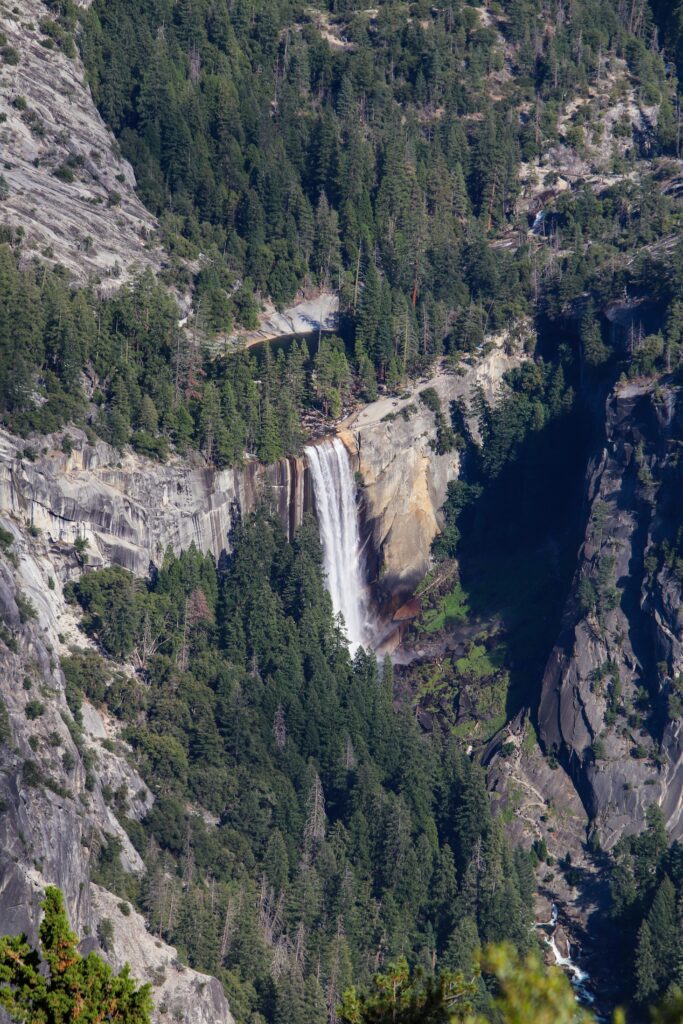
Did you know that California is home to over 100 named mountain ranges? These ranges cover roughly 50% of the state's land area, making California one of the most geographically diverse states in the U.S. Each range has its own unique character, ecosystems, and attractions waiting for you to explore.
Whether you're an avid hiker, a nature enthusiast, or simply looking for breathtaking views, California's mountains have something for everyone. From the ancient redwoods of the Santa Cruz Mountains to the striking rock formations of the Diablo Range, you'll find countless wonders to discover. So grab your hiking boots and get ready for an unforgettable journey through California's magnificent mountain ranges!
California Mountain Ranges: A Friendly Guide to Golden State Heights
Geography of California's Mountain Ranges
California's landscape is defined by its diverse mountain ranges, each with unique features and geological formations. These ranges shape the state's climate, ecosystems, and natural resources.
Major Ranges and Their Features
The Sierra Nevada dominates eastern California, stretching for 400 miles. It's home to Mount Whitney, the highest peak in the contiguous United States at 14,505 feet. You'll find stunning granite formations and deep valleys carved by glaciers here.
The Cascade Range extends into northern California, featuring volcanic peaks like Mount Shasta. Its snow-capped summits and lush forests create breathtaking scenery.
Along the coast, you'll encounter the Coast Ranges, running parallel to the Pacific Ocean. These mountains influence California's climate, creating a rain shadow effect.
In southern California, the Peninsular Ranges offer a unique blend of Mediterranean and desert climates. You can explore diverse ecosystems within a relatively small area.
Unique Geological Formations
California's mountains boast remarkable geological features. The Sierra Nevada‘s iconic granite domes, like Half Dome in Yosemite, were formed by plutonic intrusions and erosion.
In the Coast Ranges, you'll find the San Andreas Fault, a visible reminder of California's tectonic activity. This fault line has shaped the state's topography over millions of years.
The Peninsular Ranges feature unique batholith formations, massive igneous rock bodies that cooled beneath the Earth's surface. These formations contribute to the ranges' rugged beauty.
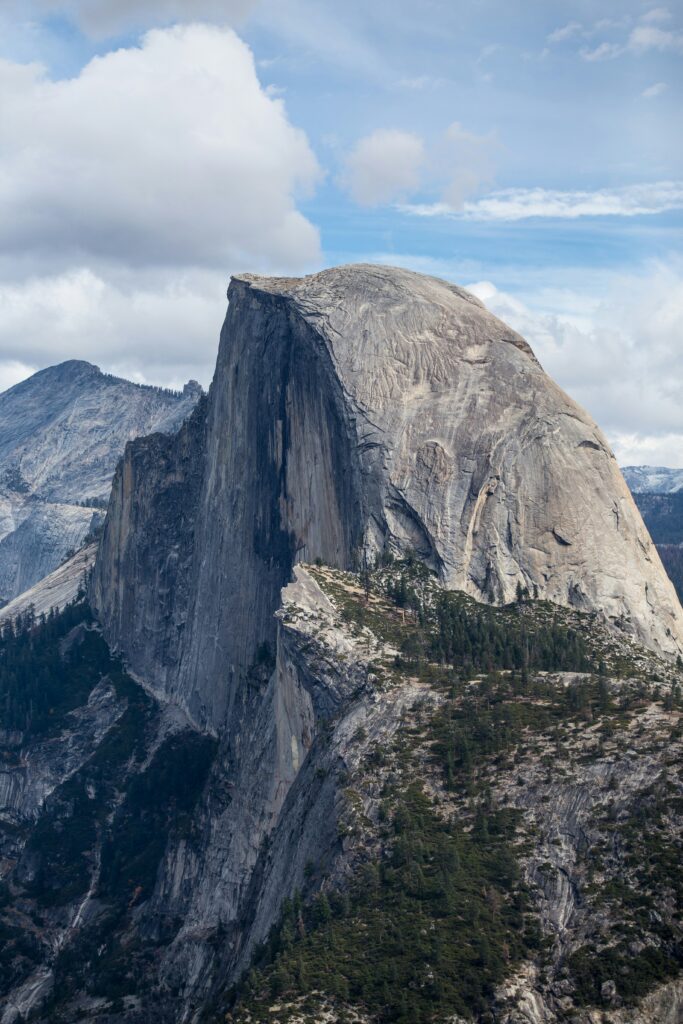
The Sierra Nevada
The Sierra Nevada is a majestic mountain range in California that offers breathtaking landscapes and iconic natural wonders. You'll find stunning glacial formations, towering peaks, and world-renowned national parks within this 400-mile-long range.
Glacial Landscapes
As you explore the Sierra Nevada, you'll encounter remarkable glacial landscapes that have shaped the region over millions of years. Vast U-shaped valleys carve through the mountains, created by ancient glaciers that slowly ground their way through the terrain.
You'll be amazed by the sparkling alpine lakes nestled among the peaks, formed when glaciers retreated and left behind deep basins. Keep an eye out for striking granite domes and polished rock surfaces, telltale signs of glacial activity.
Don't miss Lake Tahoe, the crown jewel of the Sierra Nevada. This pristine body of water, formed by glacial action, is the largest alpine lake in North America.
Famous Peaks
The Sierra Nevada boasts some of the most impressive mountains in the United States. You'll find yourself in awe of Mount Whitney, the highest peak in the contiguous U.S., standing tall at 14,505 feet above sea level.
Other notable peaks you might want to explore include:
- Half Dome in Yosemite National Park
- Mount Lyell, the highest point in Yosemite
- Mount Langley, one of the fourteeners in the range
These majestic summits offer challenging hikes and breathtaking views that will leave you speechless.
Yosemite and Sequoia National Parks
Your Sierra Nevada adventure wouldn't be complete without visiting its renowned national parks. Yosemite National Park is a natural wonderland, featuring iconic landmarks like El Capitan and Yosemite Falls.
You'll be captivated by the park's diverse landscapes, from lush meadows to towering granite cliffs. Don't forget to take a moment to admire the stunning vistas from Glacier Point.
In Sequoia National Park, you'll walk among giants. The park is home to some of the world's largest trees, including General Sherman, the largest tree on Earth by volume. You'll feel tiny as you wander through groves of ancient sequoias, some over 3,000 years old.
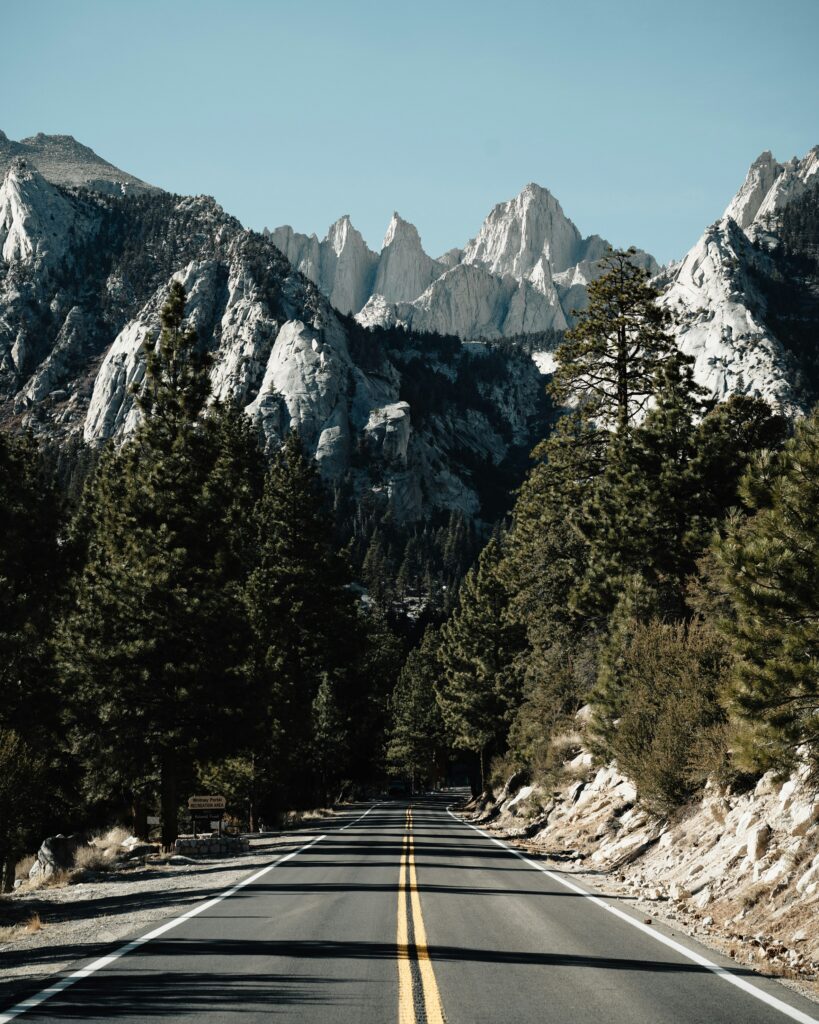
Northern California's Mountain Ranges
Northern California boasts impressive mountain ranges that shape its diverse landscape. From rugged coastal peaks to towering volcanic summits, these ranges offer stunning vistas and outdoor adventures.
Klamath Mountains
The Klamath Mountains form a rugged and complex range in northwestern California. You'll find dense forests, deep canyons, and pristine rivers here.
These mountains are home to diverse plant and animal species, making them a paradise for nature lovers. You can explore numerous hiking trails that wind through old-growth forests and alongside crystal-clear streams.
The Klamath Mountains extend into southern Oregon, creating a unique ecosystem that spans two states. You'll discover some of California's most remote wilderness areas here, perfect for those seeking solitude and natural beauty.
The Cascades' Southern Extent
The Cascades stretch into Northern California, dominated by the majestic Mount Shasta. This dormant volcano towers at 14,179 feet, offering breathtaking views and challenging climbs.
You can enjoy skiing and snowboarding on Mount Shasta‘s slopes during winter months. In summer, hiking and mountain biking trails provide access to alpine meadows and pristine lakes.
The Cascades' volcanic history is evident in the region's unique geological features. You'll find lava tubes, hot springs, and otherworldly landscapes to explore. Keep an eye out for diverse wildlife, including black bears and bald eagles, as you venture through this stunning mountain range.
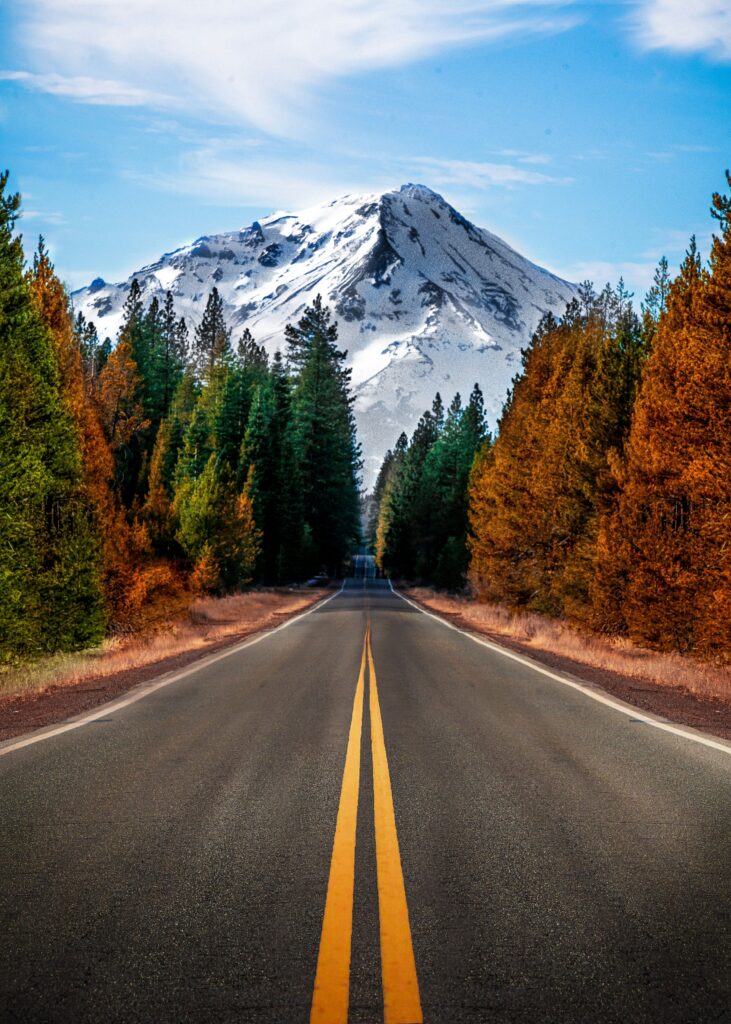
Southern California's Rugged Terrain
Southern California's diverse mountain ranges offer breathtaking landscapes and outdoor adventures. You'll find towering peaks, rugged canyons, and scenic vistas that showcase the region's natural beauty.
Transverse and Peninsular Ranges
The Transverse Ranges run east-west across Southern California, breaking from the typical north-south orientation of most western U.S. mountain chains. You'll encounter impressive peaks like Mount San Gorgonio, standing tall at 11,503 feet. It's the highest point in Southern California, offering spectacular views of the surrounding area.
The Peninsular Ranges stretch from Southern California into Baja California. These mountains create a dramatic backdrop for coastal cities like San Diego. You'll find diverse ecosystems as you explore these ranges, from coastal chaparral to alpine forests.
In the San Bernardino Mountains, you can marvel at rugged peaks and tranquil lakes. This range includes popular destinations like Big Bear Lake, where you can enjoy year-round activities.
Recreational Opportunities
Southern California's mountains provide endless opportunities for outdoor enthusiasts. You can hit the trails for hiking and mountain biking, with options ranging from easy nature walks to challenging backcountry treks.
In winter, you'll find excellent skiing and snowboarding at resorts in the San Bernardino Mountains. During warmer months, these areas transform into havens for rock climbing, fishing, and camping.
The mountains also offer scenic drives with breathtaking vistas. You can take in panoramic views of the California Coast from winding mountain roads.
For a unique experience, try stargazing in the clear mountain air. Many areas in these ranges provide excellent dark-sky viewing conditions, perfect for amateur astronomers.
Hiking and Wilderness Areas
California's mountain ranges offer incredible opportunities for hiking and exploring pristine wilderness areas. You'll find breathtaking trails and protected lands that showcase the state's natural beauty.
Top Trails in California
The Pacific Crest Trail is a must-hike for many outdoor enthusiasts. This epic trail spans 2,650 miles from Mexico to Canada, with over 1,600 miles winding through California's diverse landscapes.
You'll encounter stunning views and challenging terrain as you trek through the Sierra Nevada and Cascade ranges. For a shorter adventure, try the John Muir Trail, which covers 211 miles of High Sierra wilderness.
If you're looking for coastal views, the Lost Coast Trail offers a rugged 25-mile hike along Northern California's remote shoreline. You'll experience pristine beaches and towering cliffs as you navigate this less-traveled path.
Wilderness Preservation Efforts
California takes pride in its 149 wilderness areas, covering nearly 15 million acres. These protected lands range from six acres to over 3 million acres in size.
You'll find diverse ecosystems in these wilderness areas, from coastal redwood forests to alpine meadows and desert landscapes. The Wilderness Act of 1964 ensures these spaces remain untouched by development, preserving their natural beauty for future generations.
Many organizations work tirelessly to maintain and expand these protected areas. You can support their efforts by volunteering for trail maintenance, participating in clean-up events, or donating to conservation groups.
By exploring these wilderness areas responsibly, you help raise awareness about the importance of preserving California's natural wonders. Remember to practice Leave No Trace principles to minimize your impact on these fragile ecosystems.
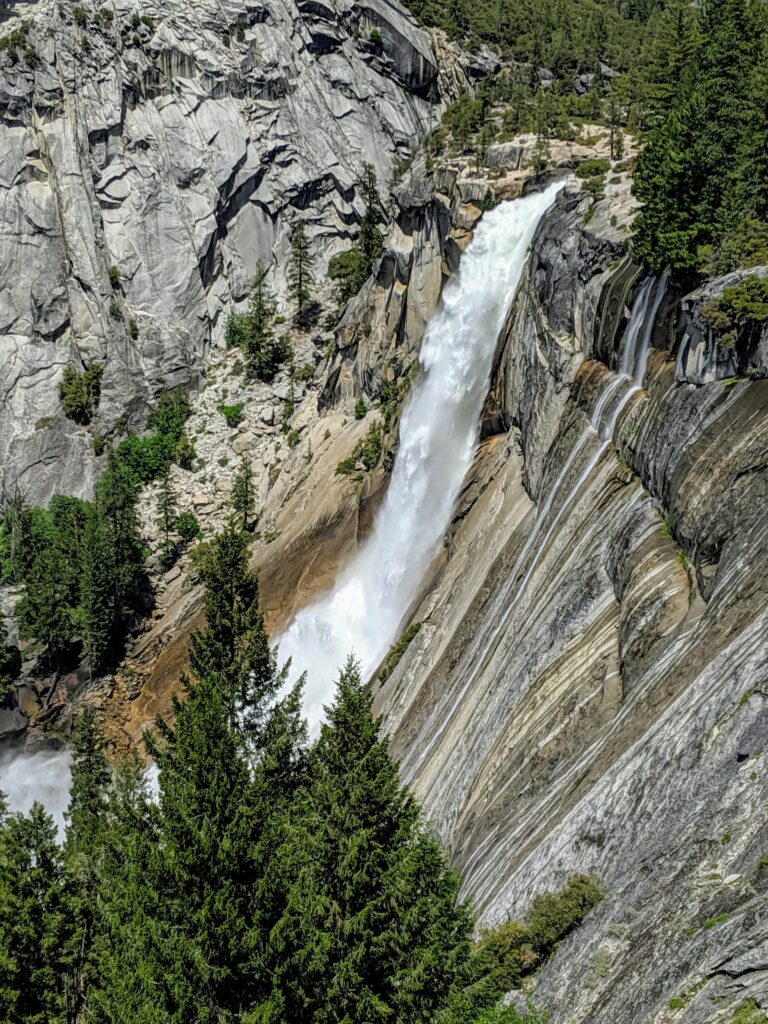
The Impact of Climate on Mountain Ecology
Climate change is reshaping California's mountain ecosystems in profound ways. You'll discover how rising temperatures and shifting weather patterns are affecting the diverse plant and animal life that call these ranges home.
Flora and Fauna
In California's mountain ranges, you'll find a rich tapestry of life adapting to new climate realities. Biodiversity in these areas is facing significant challenges as species struggle to cope with changing conditions.
You might notice some plants and animals moving to higher elevations in search of cooler temperatures. This upward shift is particularly evident in small mammals and certain plant species.
Coast Redwoods, those iconic giants of California's forests, are also feeling the heat. You'll be fascinated to learn that these trees are now relying more on fog for moisture as rainfall patterns change.
Wildlife in these mountain ecosystems is facing its own set of challenges. You'll see changes in breeding patterns, migration timings, and even physical characteristics as animals adapt to new climate norms.
Changing Weather Patterns
As you explore California's mountains, you'll encounter the effects of shifting weather patterns firsthand. Winters are becoming milder and shorter, while summers are growing hotter and drier.
These changes are altering the seasonal rhythms that plants and animals have relied on for centuries. You'll notice earlier spring blooms and later fall color changes in many areas.
Rainfall is becoming more unpredictable, with longer dry spells punctuated by intense storm events. This new reality is affecting everything from wildfire risk to water availability for both wildlife and human communities.
Snow cover, a critical source of water for many mountain ecosystems, is diminishing. You'll see the impact of reduced snowpack on rivers, streams, and the many species that depend on these water sources.
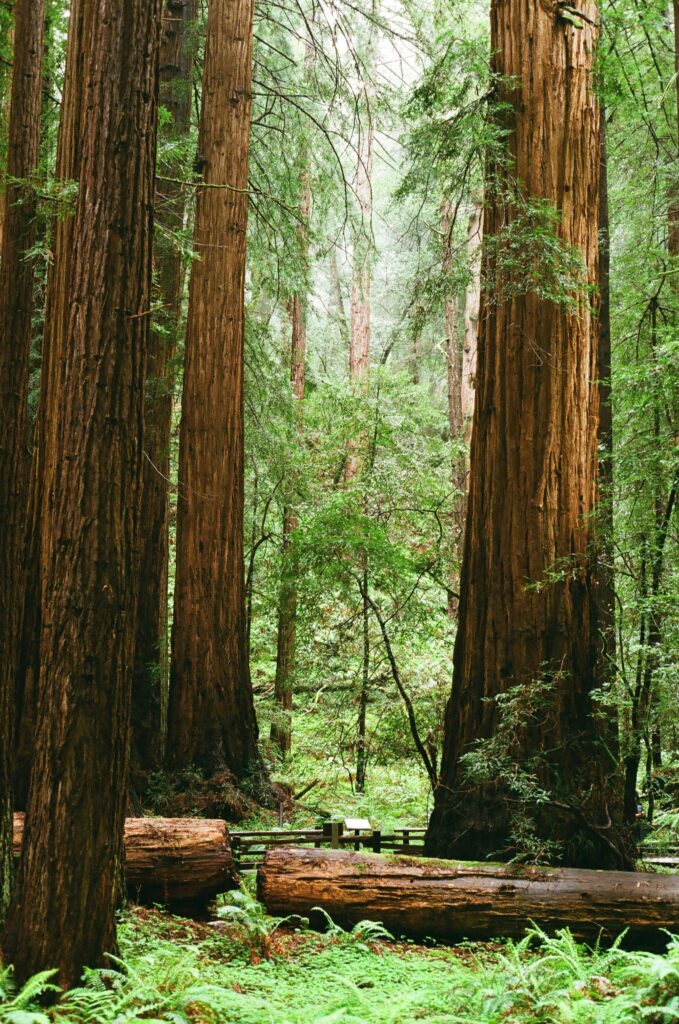
Outdoor Adventure Sports
California's mountain ranges offer thrilling outdoor activities for adventure seekers. You can experience adrenaline-pumping sports amid stunning natural landscapes, from snow-capped peaks to rushing rivers.
Skiing and Snowboarding
Mammoth Mountain is a premier destination for winter sports enthusiasts. You'll find world-class slopes and breathtaking views of the Sierra Nevada range. With an average of 400 inches of snowfall annually, you can enjoy an extended ski season from November to June.
The mountain offers varied terrain for all skill levels. Beginners can take lessons at the ski school, while advanced skiers tackle challenging black diamond runs. You'll find modern lifts and well-groomed trails across 3,500 acres of skiable terrain.
After a day on the slopes, you can relax in cozy lodges or explore the vibrant après-ski scene in Mammoth Lakes. Don't forget to pack warm layers and rent high-quality gear for the best experience.
Rafting and Water Sports
California's mountain rivers provide exhilarating white-water rafting adventures. You can navigate rapids ranging from gentle Class I to heart-pounding Class V. Popular spots include the American River and Kern River.
Spring is the best time for rafting when snowmelt swells the rivers. You'll paddle through gorgeous canyons and forests, spotting wildlife along the way. Many outfitters offer guided trips with experienced instructors to ensure your safety.
For a more relaxed water experience, try kayaking or stand-up paddleboarding on mountain lakes. Castaic Lake in Southern California is perfect for jet skiing and other motorized water sports.
Always check water conditions and wear appropriate safety gear. With proper preparation, you'll create unforgettable memories on California's mountain waterways.
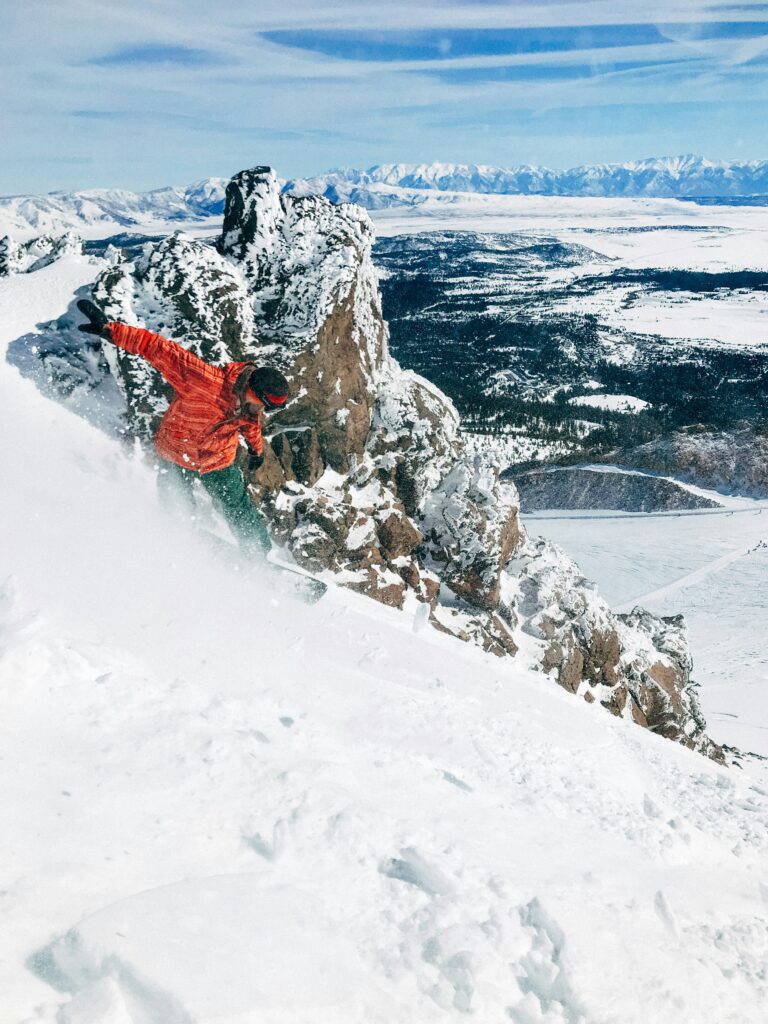
Conservation and National Parks
California's mountain ranges are home to incredible natural wonders that deserve protection. You'll find numerous efforts to preserve these landscapes for future generations to enjoy.
Protection of Natural Resources
In California's mountains, wilderness areas play a crucial role in safeguarding delicate ecosystems. These protected zones limit human activity to preserve native plants and animals. You'll notice strict regulations on development and resource extraction in these areas.
Many mountain ranges also have special designations to protect specific features:
- Ancient sequoia groves
- Pristine alpine lakes
- Rare wildlife habitats
By visiting responsibly, you help maintain these fragile environments. Remember to follow “Leave No Trace” principles when exploring.
Role of National Parks
National parks are the crown jewels of California's mountain conservation efforts. You'll find some of the most stunning landscapes protected within their boundaries.
Yosemite National Park showcases the grandeur of the Sierra Nevada. Here, you can marvel at:
- Towering granite cliffs
- Thundering waterfalls
- Ancient sequoia groves
Sequoia National Park protects the world's largest trees. You'll feel tiny standing next to these giant sequoias, some over 2,000 years old!
National parks also serve as outdoor classrooms. You can learn about geology, ecology, and conservation through ranger programs and visitor center exhibits.
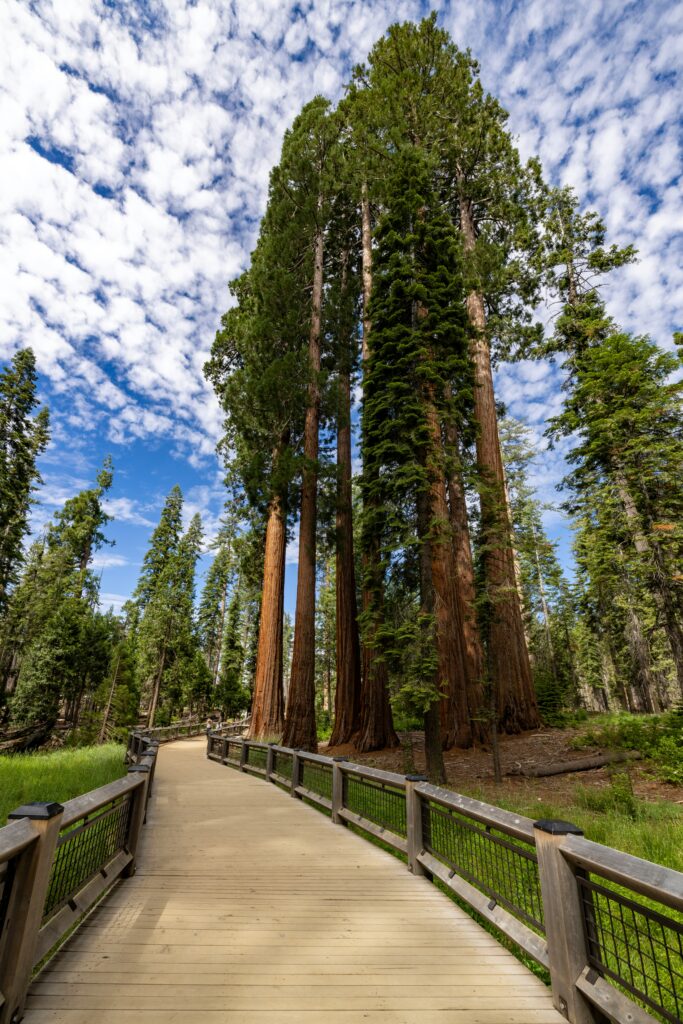
Mountain Ranges and California Culture
California's mountain ranges have profoundly shaped the state's culture and identity. These majestic peaks have influenced everything from historical events to artistic expressions, leaving an indelible mark on the Golden State's heritage.
Historical Significance
The mountains of California played a pivotal role in the Gold Rush, which forever changed the state's trajectory. In 1848, gold was discovered at Sutter's Mill in the Sierra Nevada foothills, sparking a massive influx of prospectors. This event rapidly transformed California's landscape and population.
You might be surprised to learn that the mountains also shaped early transportation routes. Pioneers and settlers had to navigate treacherous passes, which influenced the development of towns and cities. The mountains served as natural barriers, impacting trade and communication patterns throughout the state's history.
Mountains in Arts and Literature
California's stunning mountain ranges have long captivated artists and writers. You'll find countless references to these peaks in literature, paintings, and photographs. The iconic Yosemite Valley, nestled in the Sierra Nevada, has been a particular source of inspiration.
Famous naturalist John Muir wrote extensively about California's mountains, helping to spark the conservation movement. His vivid descriptions of the Sierra Nevada's grandeur continue to inspire readers today. In the visual arts, you'll discover breathtaking paintings and photographs capturing the majesty of these ranges, from Ansel Adams' striking black-and-white images to Albert Bierstadt's romantic landscapes.
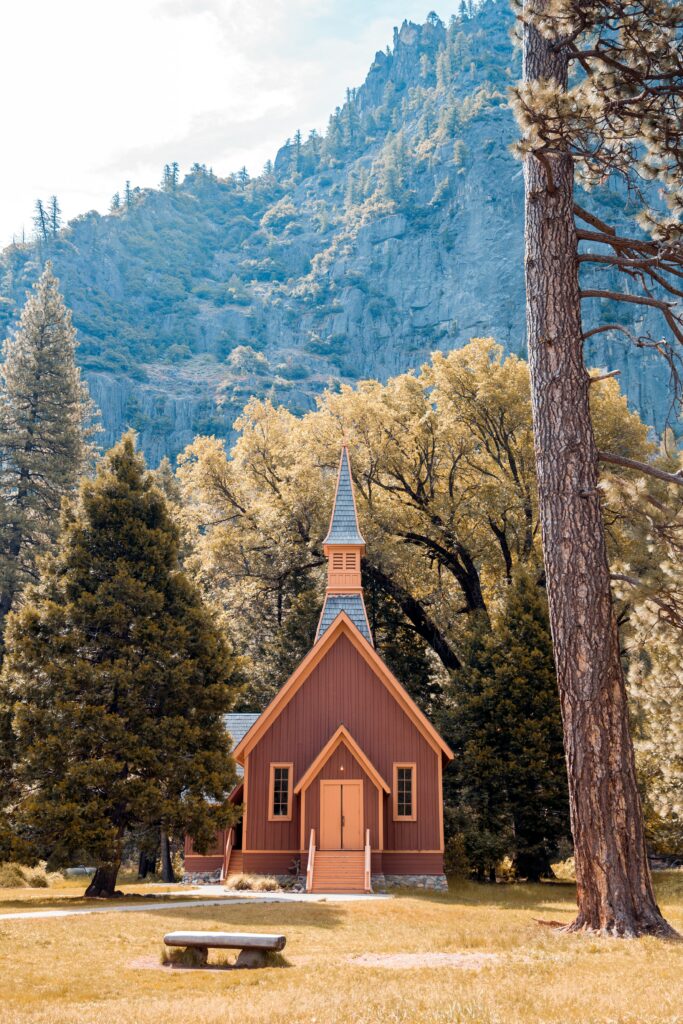
Scientific Research and Observatories
California's mountain ranges provide unique opportunities for scientific exploration. They host world-class facilities that allow researchers to study the cosmos and Earth's geological processes up close.
Astronomical Observatories
Did you know that some of the world's most important astronomical discoveries have been made right here in California's mountains? The Palomar Observatory, perched atop Palomar Mountain in San Diego County, is a prime example.
This observatory houses several telescopes, including the famous 200-inch Hale Telescope. You might be amazed to learn that it was once the largest telescope in the world!
Researchers use these powerful instruments to study distant galaxies, search for exoplanets, and unravel the mysteries of the universe. The clear mountain air and dark skies make it an ideal location for stargazing.
Geological Studies
California's diverse mountain ranges offer geologists a natural laboratory to study Earth's processes. You can find researchers examining everything from active volcanoes to ancient rock formations.
The White Mountain Research Center provides a unique high-altitude environment for scientific studies. At elevations reaching over 14,000 feet, you'll find scientists investigating:
- Climate change impacts
- Plant and animal adaptations to extreme environments
- Geological formations and processes
These studies help us understand how mountains form, change over time, and impact local ecosystems. You might be surprised to learn that research conducted in California's mountains often has global implications!

